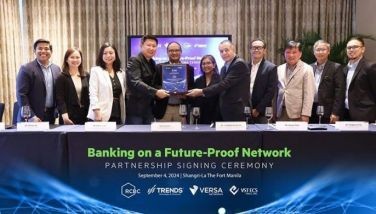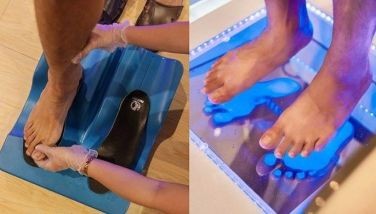Invent, then make

It seems the land of opportunity isn’t America anymore (nor Europe). For Filipinos, anyway. Not right now.
Despite the recovery of the big banks through massive government bailouts, the US economy — in deep recession since 2008 — grew by only 1.1 percent in April-June 2011. Job prospects remain bleak. Two-thirds of Americans polled mention jobs as their topmost concern.
The US unemployment rate for August was 9.1 percent, or 15 million jobless workers. One estimate however puts the number of unemployed and underemployed Americans at 25 million - more than 16 percent of the work force.
With this ground-level reality, liberal US economists have criticized President Obama — and more scathingly the Republican leadership of the House of Representatives — for having agreed on an austerity program that has raised the country’s borrowing ceiling, continually cut budgetary spending to reduce deficits, but not increasing taxes on the very rich.
The economists’ resounding call is for more government spending to “get America back to work,” to create more jobs.
IMF Managing Director Christine Lagarde has pitched in. She urges the US — and the big European Union member-countries (average unemployment: 9.9 percent) — to prioritize job creation over deficit reduction, among other measures, to prevent a double-dip recession.
It turns out that, on the heels of the 2008 financial and economic debacle, advocates of job creation through the revival of US manufacturing using advanced technology have already done their homework.
For instance, Susan Hockfield, president of the Massachusetts Institute of Technology, formed a commission to investigate the state of US manufacturing and offer a plan for its future development. She recently reported that, to recover from the economic slump and recoup a $500-billion trade deficit in manufactured goods, the US must create 20 million jobs in the next decade.
But where would the jobs come from? Hockfield’s reply: from “reinventing” manufacturing.
“Manufacturing is simply this huge engine of job creation,” she avers. In a recent article in the International Herald Tribune, Hockfield points out that the US became the world’s largest economy “because we Americans invented products and then made them with new processes.”
But to rebuild that manufacturing capability, this neuroscientist recommends “the demolition of the idea that the United States can thrive on its service sector alone.” The service sector’s share in world trade, she adds, is only 20 percent.
Hockfield cites these examples of advanced manufacturing that can create both jobs and markets:
1) Sophisticated instruments, developed and produced by a California firm, that use DNA analysis to detect infectious diseases and cancer;
2) Hand-held chargers for mobile devices, developed by a new firm, that are more efficient than wall chargers; and
3) Advanced lithium-ion battery cells for hybrid-electric cars, buses and large-scale energy storage systems, developed by a nanotechnology breakthrough at MIT. Designed for clean-energy industries, the new batteries are lighter, longer lasting and more powerful than other types. They were initially produced by A123 Systems, which received $375 million in federal government stimulus funds and matching state grants to set up headquarters in Michigan, with 1,000 workers. Another firm, Dow Kokam, has built a similar plant, with a $161-million grant from the Department of Energy and an initial workforce of 350.
President Obama has endorsed this new battery industry. All together, the government has provided $2.5 billion in stimulus funds to 30 companies using the technology. This direct government action to revive manufacturing represents a shift from what has been described as America’s role: “to feed a global economy that is increasingly based on knowledge and services rather than on making stuff,” as the New York Times Magazine notes in a recent article.
With the stimulus funding, the US firms are projected to produce 40 percent of the lithium-ion battery world output by 2015; US production was only two percent in 2009.
Note this significant aspect of this story. When A123 adopted the lithium-ion technology 10 years ago, it manufactured the batteries in South Korea and China. Why? Because the supply base and the know-how were then in these Asian countries, not in the US, explains Jason Forcier, A123 executive.
Thus, when it “repatriated” the manufacturing to America, A123 brought in six Korean engineers to help transfer the technology and sent American engineers to Korea to learn further.
Lately, President Obama harnessed Hockfield and Andrew N. Liveris, Dow Chemical chief executive, to lead a group of industry, academic and government representatives in finding ways to boost research in advanced materials and processes and increase the pool of skilled workers.
Hockfield waxes optimistic. She writes: “The prospect of good manufacturing jobs in the United States is not a fantasy. Germany and Japan enjoy high wages and run major surpluses in manufactured goods; so can we. Our economy will thrive only when we make what we invent.”
Yet the NYT Magazine article is equivocal. “It is tempting to see in these the stirrings of an industrial revolution. As the US’s jobless rate hovers above nine percent, could this manufacturing revival be part of the answer to the jobs crisis? Or is it merely an expensive government bet on a lost cause?”
Nonetheless, our economic planners must study this development, and learn from its lessons.
* * *
Email: [email protected]
- Latest
- Trending




























